Speech
Speech given by Marieke Sanders on the occasion of the opening of the new academic year at the Rijksakademie, Amsterdam in 2010.
Selection and excellence
Selection and excellence is today’s theme, to celebrate the opening of the academic year of the Rijksakademie offering us a moment of reflection on this very essential part of your work as an artist and mine as a collector. I have been asked to say a few words on how I as a collector select and why a collection can be labelled as excellent. And it is quite an honour for me, as I am not an art-historian, neither a philosopher, nor a writer, or art critic. It is a challenge to think and discuss with you this part of my life: collecting contemporary art in its full and broad range. I consider myself a simple collector, someone, who enjoys looking at art and buying it in order to have it and live with it. Is it just greed and emotion? Do I enjoy living in an elegant and aesthetic environment with nice things on the wall? Do I have economic reasons hoping my investment will bloom? I don’t know. To tell the truth, a bit of all this might be true I am afraid. But what I do know is that art is an integral part of my life. My love of art seems to be a leading principle in whatever I do.
And what about my contribution as a collector to the artist and the art world? Am I just a consumer as you are just a producer, or is there more. Collecting art is a two way affair, you, the artists and I as a collector, are two sides of the same coin. Just as a writer needs a reader and a composer needs his works to be played, objects of art need a buyer, a collector. We are the market and show appreciation and understanding and welcome new ideas.
Background
My background? I have a degree in English and General Literature (literatur wissenschaft). So I have learned about the importance of selecting a point of view, a character, time and place and appreciate the very complex selection mechanism that some authors apply in telling their story.
I have been a teacher and school manager, the executive director of the Reading Foundation in the Netherlands and a politician, first in the Provincial Council and later on in the European Parliament. Now I am still active for the Council of Europe and serving on various boards of cultural organisations, ranging from the Copyright Collecting society Stichting Reprorecht, to Manifesta, the Wertheimer Foundation and the Cultural Emergency Relief Fund, a program of the Prins Claus Fund. I am married to Pieter Sanders, a retired lawyer and judge, and have two children, both married and giving me 5 wonderful grandchildren.
Our collection, history and selection criteria
Pieter and I have been collecting for many years. We share a common passion for art. Both coming from collecting families, we started some 35 years ago to build our own collection. Looking back you can see that in the beginning we were hesitant to buy, very selective, wondering whether we made the right choice, (whatever that is) and more or less restricting ourselves to young, cutting-edge work of Dutch artists. Of course our financial means were limited, we were building up a family and a career. But over the past twenty years, we became more and more confident in our choices, and our collection and passion grew. And it became more international as we found more time to travel and visit art fairs abroad. We are now even listed in Art in America. But of course that was not the only reason for opening up to the international world. The art world itself is becoming more international. Globalisation has become a keyword and puts its stamp on the art world as well, as you, my audience today, are the proof and sublimation. Many nationalities from all over the world assemble here at the Rijksakademie, sharing ideas, friendship and building on a global network of the young and the promising, the high potentials.
Coming to the subject of today, I would like to tell you about our selection, the criteria we use, the complexity of selection and attraction, and finally linger a bit on the idea of excellency.
Principles of selection
We have only four basic principles for selection:
Novelty: It should bring us something new, either in ideas, innovative ways of using material, approach to genres, crossing-overs etc. A work should surprise us. Take for example the Vanitas object by Folkert de Jong, a new, colourful interpretation of an old theme (fig. 2).
Vitality: It should bring us new energy, wide horizons, or intimate “verstilling”, But what the attraction is, is difficult to put into words. It might be as vague as the feeling “we want to have it”.
Location: We should be able to find a place in our home or garden for the artworks. We want to see it, even if it is only for a short period of time. We want to be surrounded by it, it should become part of our life. Size or material can be an obstacle, if it is too big or too fragile to have it in our own home, we don’t buy it, however much we regret it. We should also be able to live with it, if it is too sexually charged, cruel or explicit, we don’t buy it either. We ask a curator to help us to hang works in our whole house, we change every two years. We sometimes organize open house, so that more people can enjoy the artworks in a private context.
Budget: It should fit our budget, which is limited. We are private collectors, no backing up of a company, a bank or other funding. Amateurs, in the real sense of the word: we love art. And just for the record, we never buy because we feel sorry for the artist!
No limitation
But, and that is what I like about our criteria, they are not a limitation, they serve as a touch-stone and can be put aside at any moment we like, which makes the selection a real adventure.
Our selecting process is a very simple mechanism. Pieter and I select and decide. It is our money and our choice, but we should agree and decide together. We don’t owe any responsibility to anyone else, we don’t want an adviser. We are our own boss, curator, selection committee, storer, hanger and administration. So if we see something that really attracts us, but doesn’t fit the criteria, we discuss whether we can still have it and buy it anyway.
The selection process
How do we select from the wide range of works that would fit these few simple criteria, in other words, how does the selection process work in practice?
My husband sometimes compares the selection process to how a man selects his partner. In a world full of beautiful women, why do you fall in love with one woman, and not with all the others? Is it just chemistry, are there social motives involved, can you rationalize it?
In practice it is a much more complex process, it is feeling, emotion, intuition, it is knowledge, experience, it is greed. It is the complexity of the selection process, which makes it very exciting, giving pleasure and energy.
To give you some examples of the variety of factors that make us buy:
1. Pleasure of recognition
The pleasure of recognizing the intensity of a new creation, for instance. Pre-eminently an artist has the ability to stick to his own ideas, shaping them according to his own norms and vision, without any concession. This makes his work unusual in a world full of rules and regulations. Sometimes highly skilled, sometimes approaching his subject and material carefree, with an admirable simplicity and naivety. As an observer you share this pleasure and feel partner in crime. It offers you a different view of how the world ticks.
2. The challenge of new media
It can be the challenge which photography and new media offer us. In photos, reality and point of view are challenged and often manipulated. Although you might think that you see reality, you don’t really know what you see. With the introduction of video in art, a new medium/instrument was born. The observer no longer decides how much time he spends looking at a work. In order to get the idea, the video now dictates the observer the time of observation. Time has become an exciting new instrument.
3. Sharing reflection on the world
It can be a reflection of the interior world of ideas, which the artist likes to share with the observer or make him aware that there are other values in life. He can make us laugh or choke.
4. Aesthetics
It can be the aesthetics of a work. We appreciate a well-made painting, but it should always have something special, techniques alone is not enough. We feel attracted to conceptual work, nature in all its glory or with a twist, an anecdote visualized, architectural structures, a hidden desire.
5. Comment on the world
It can be that the artist gives an intimate and moving comment on world events, political ideas, showing socio/economic motives, which make people act the way they do. We like those comments not to be too obvious or explicit. From the context it should become clear what the message is, more in the abstract.
It can be one of these, or the sum total. The medium itself is not so relevant. Whether it is a painting, an object, a photo, a film, products of the new media, material as wood, bronze or clay. For us, it is important that the selection of the medium is in correspondence with the ideas the artist wants to express and which makes the representation in this way unique.
So much for selection, I am sure a lot more can be said about it.
Excellency
But lets turn to the question of excellency now. How is selection related to excellency? And excellency to our collection. Our way of selecting and collecting does not necessarily lead to an excellent collection. I am very much aware of that. But it has become a very personal collection, specific, reflecting our taste and choice, interest and budget, set in time, our time.
And speaking of excellency, I would like to take this opportunity to share with you some thoughts about the differences I see between a private collection of contemporary art and the collection of a museum.
Policy based or not
A museum or institute functions in society and has to develop a policy in order to account for its existence. The aim of Institute Collection Netherlands for instance is to give an overview of Dutch contemporary art. The Stedelijk Museum Amsterdam is supposed to show internationally important artists and new trends. But private collection does not need to be policy based. It can be as broad as you like, and can cut across all disciplines, as ours does. There is no Arts Council or Advisory committee looking over our shoulders. It is the intuitive way of selecting that makes up for a different model. We want to be surprised, amused, intrigued and don’t bother about policies or accountability. That makes private collections flexible, lively and unexpected. There is no social responsibility. But at the same time, the selection exceeds the personal. Many of the works in our collection could be found in museums and institutes as well. Many are on demand for expositions by those museums.
So, apparently the elements that trigger our selection mechanisms are quite different from that of a museum. Selection takes place on a more subconscious level. They stir up our desire but are not rationalized by external influences.
Quality
In both museums and private collections quality plays an important role. Although many of the works in our collection have museum quality, to mention only a few: David Vandekop, Jef Geys, Marlene Dumas, Joep van Lieshout, Stephan Balkenhol (fig. 4), Ryan Gander, Michael Raedeker, Alicia Framis (fig. 5), we can afford to buy works of lesser known artists, simply because we enjoy their work. Or take a risk by buying a young, emerging artist, who might or might not reach the top. We can take that chance. We can buy early as we have no responsibility towards the public, we don’t use public money. We are responsible only to the artists and to ourselves. That makes private collections very adventurous.
Not striving for completeness.
We don’t have to be complete. Unlike the collections of a museum, there is no specific aim or goal other than to please our friends and us. We don’t have to be complete. If we miss an artist, we can feel sorry and even stupid for not recognizing his potential, but we don’t have to get it at a higher price, just to be complete. But if I look back, our collection does offer a picture of a period, a timeframe according to our point of view of course, of what has been of interests in Dutch art over the past 30 years.
Interaction in the personal context
In a museum, works are displayed separately, or in combination with others, but set apart, telling the observer: this is art.
Most private collectors want to have their trophies near them, in their own context. Some keep them in a virtual museum of the mind, but for us, they are part of our daily life. We cannot escape. We are constantly confronted with the works we buy.
Pieter and I use our own house for display. It is not a white cube. We take into account that the artworks can be shown favourably, by having simple furniture, whites and greys on the wall, no flowery curtains. But it is my home, and I want to live with the collection among my things, my family’s antiques. The artworks have to share the room with ordinary stuff like newspapers, books, the toys of our gran children and kitchen utensils. The artworks are everywhere, even in the bathroom. And that is also a difference with a museum. There is an interaction with the artworks themselves as well as in combination with the house and our way of life.
The collection is intimate, but the choices go beyond the private. They move towards a sort of twilight zone, unexpected in their new context en surroundings, but still prominent visible on their own. The artworks might be surprised to find themselves living apart together.
Autonomy
However, the most significant difference with a museum is the autonomy of the private collector. You are on your own. The private collector has to use his own personal strength and taste to select and collect, find his way in the immense offer of interesting and beautiful objects of art. In the variety on offer, his own interest, knowledge and taste are the factors that count.
Our collection cuts across disciplines and is mainly conceptual. And yet, it is a full collection and acknowledged as such. Gombrich used a nice metaphor for a collection: he describes a wonderful meal cooked by a chef. All the ingredients are there: salt, pepper, excellent fish and fresh vegetables, you name it. Anyone could make a meal out of these ingredients. But something tells you that this specific meal is all right, complete, top. Only the top chef, by adding his personal touch, makes it complete. This cannot be rationalized, nor explained, but is undeniably there. And so it is with the many private collections I know.
To me it seems that museums and professional collectors collect in a different way. They are more depending on the market or make themselves dependent. They have to or want to collect big names. They either have to bow for the budget restrictions, the numbers of visitors, the public opinion, the art critics, or for an executive board that pulls the strings, financially or eager to protect their image. Only very few museums can follow their own dream freely. The search for novelty and quality is in a spiralling movement upwards, like “Rupsje nooit genoeg” by Erik Carl. When have you reached your goal? When is enough enough.
Our collection influences our daily life, and I am sure that it has an effect on our vision of the world. The excellency might be in the way it stimulates us to have an open mind towards new ideas, affects us in the way we look and experience art as part of society and the world around us.
Conclusion
After more than 30 years, our collection is by now large, varied, international and challenging. Whether we made the right choices needs to be seen. We missed opportunities, bought works at a very early stage in the development of an artist (Raedeker) some grew; others are forgotten or remained in the background. Only the future can tell. The collection is still almost intact, so far, we haven’t sold anything. But the collection has outgrown our house and stock, and we are looking for a new home for them, a second life so that more people can enjoy them. That is why we recently donated some works to the Cultural Heritage Agency of the Netherlands.
To Pieter and me the collection is like a story, a whole story, or rather a sum total, made of discoveries, encounters, pleasures shared or yet to be shared. These stories are irreplaceable. They are the soul of the collection. The outsider will know some of the stories and guess others, but for most part they remain unknown to him. That leaves what is most important: the works of art themselves.
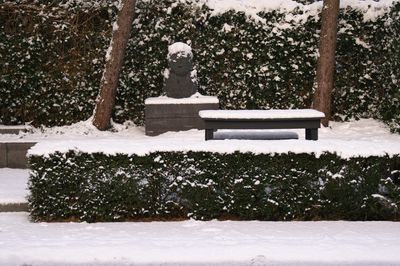
Fig. 1 Armando, Kopf, 1999 (I often show this picture of Armando's work in our garden, because I like the little hat caused by the snow)
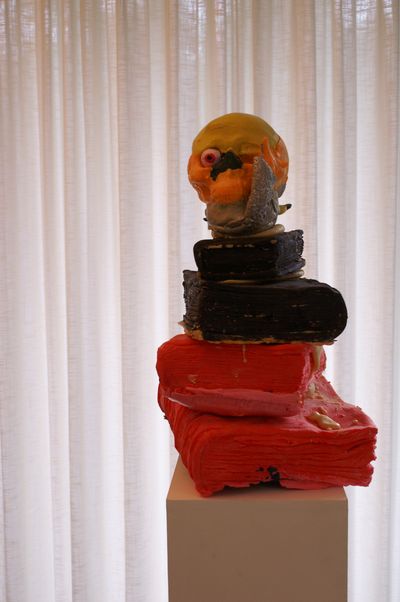
Fig. 2 Folkert de Jong, Buchentod, 2007
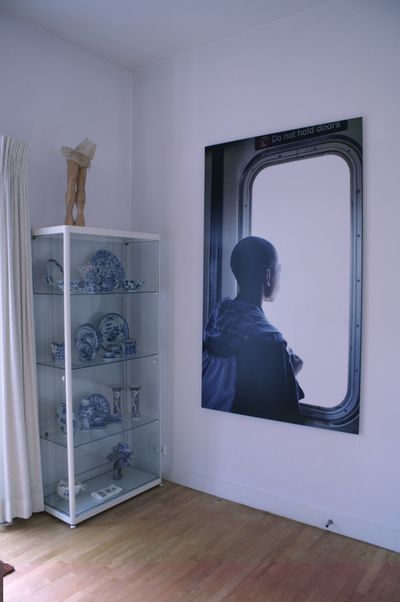
Fig. 3 Juul Hondius, H13.1 New York, 2003
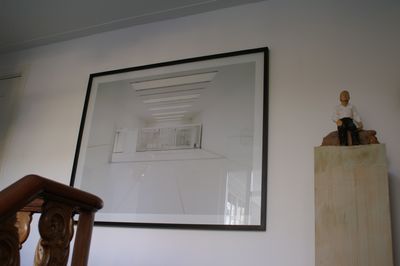
Fig. 4 Stephan Balkenhol, Man with pig, 1997 and Jan de Cock, Denkmal 53, 2006
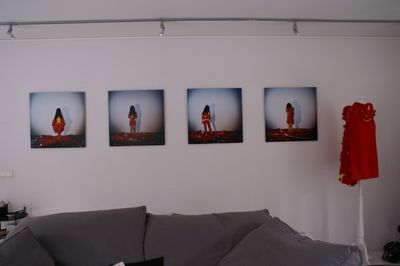
Fig. 5 Alicia Framis, 100 ways to wear a flag, 2007